History books say that our country’s founding was in the year 1776. But the land now known as the United States was populated by Indigenous peoples and colonial settlers long before that historic declaration of independence. And that means that many U.S. cities — particularly those on the East Coast — have been around for far longer than two and a half centuries. With that in mind, here are 15 of the oldest continuously inhabited cities in the United States.
15. Newport, Rhode Island

Aside from being one of the country’s oldest cities, Newport, Rhode Island, is special because its settlement was led by a woman. Boston resident Anne Hutchinson was driven out of the city because of her Antinomianism religious views, and a group of followers accompanied her to resettle on Aquidneck Island — after permission was received by the local Indigenous people — in 1636. The Indigenous population had a thriving community there, with sophisticated fishing practices and land management strategies. Hutchinson and her followers settled in the north of the island, in an area called Pocasett. By 1639, half of Hutchinson’s group left with William Coddington and Nicholas Easton, who took their followers to the southern end of the island to found present-day Newport, now known for its Gilded Age mansions, shopping, and seaside views.
14. Williamsburg, Virginia
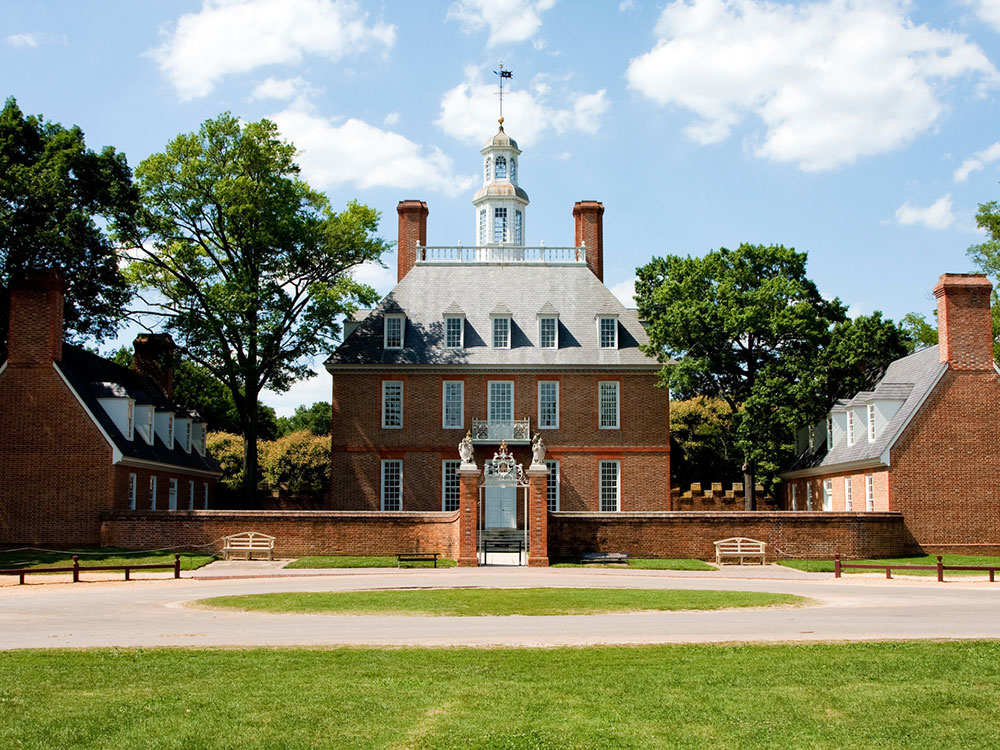
In 1633, the Virginia Assembly ordered the founding of a town called Middle Plantation, in the center of the Virginia Peninsula. Unlike other towns at the time, the settlement was not located along the James River. Nonetheless, the town had a hand in a number of historic events, like Bacon’s Rebellion in 1676, when Nathaniel Bacon challenged Virginia’s governor. Bacon and his followers had burned down many of the buildings in Jamestown, and those displaced settlers relocated to Middle Plantation. The College of William and Mary (the country’s second-oldest college) opened in 1693, and shortly thereafter, Middle Plantation was renamed Williamsburg, after King William. The country’s first mental health hospital was established in Williamsburg in 1773, and in 1781, George Washington assembled his troops there to siege Yorktown and win the Revolutionary War. Today, visitors can stop in and explore Colonial Williamsburg, the world’s largest outdoor living history museum, educating guests on what it was like living in colonial America.
13. Boston, Massachusetts
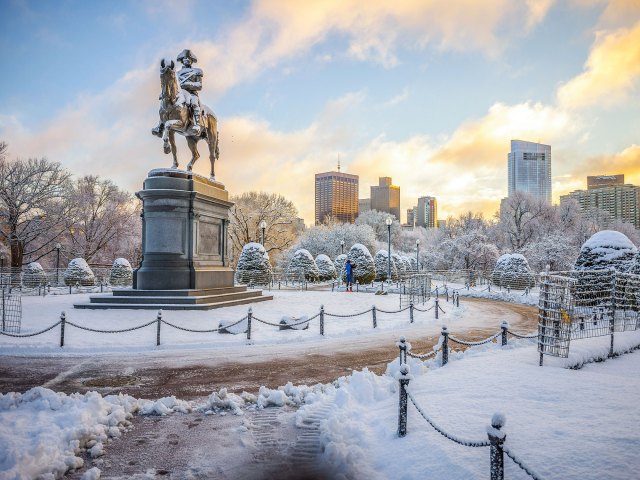
Boston was officially founded in 1630, but by the time Puritan colonists arrived on the Shawmut Peninsula, where the city started, it was already occupied by a recluse named Reverend William Blackstone. Blackstone had left England seven years earlier, hunting down his own sense of peace and quiet, and found it on the peninsula. Blackstone welcomed the Puritan colonists and showed them where the natural spring was — and then they took over his land. They then “granted” him back 50 acres of his own property. Four years later, he sold it back to them and left. Meanwhile, the colonists had built a church, cemetery, tavern, and inn. In 1635, they opened Boston Latin School, the first American public school. Boston took center stage in the fight against British rule with the infamous Boston Tea Party protest of 1773.
12. Quincy, Massachusetts
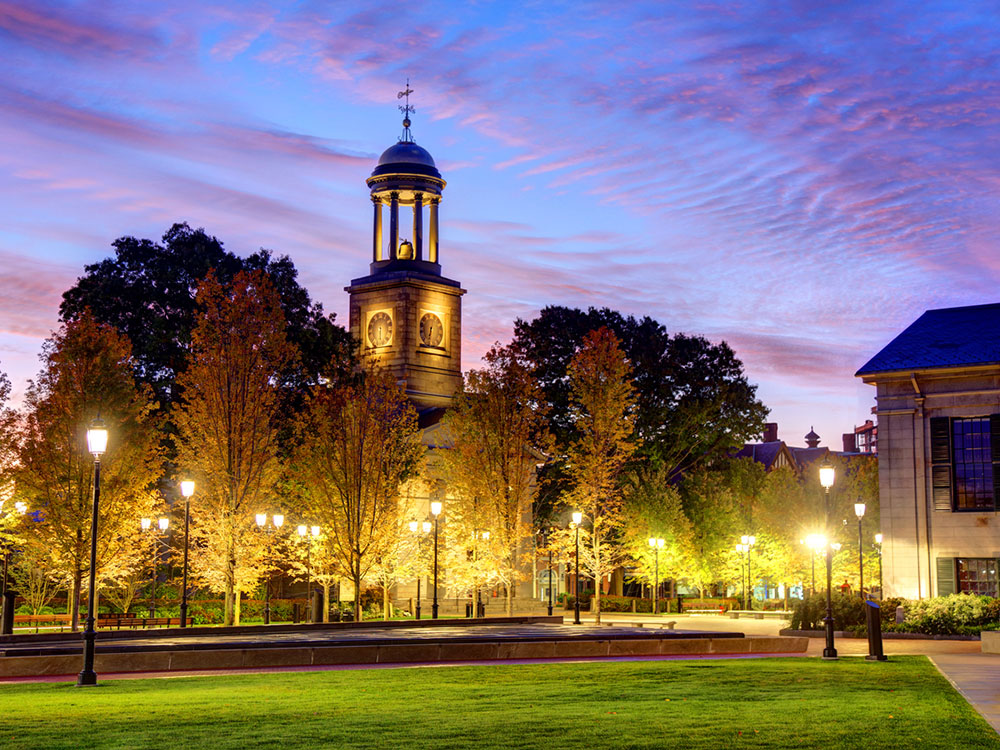
Quincy — first settled by the English in 1625 — didn’t become its own city until nearly 170 years later. In the early years, it was absorbed first by Dorchester, then by Boston, and then by Braintree, where it remained until breaking out on its own in 1792. The city was named after Colonel John Quincy, the grandfather of Abigail Adams and grandfather-in-law to John Adams, the second President of the United States. Quincy considers itself the most patriotic city in the country; it’s the only one to have produced two presidents (Adams and his son John Quincy Adams) and is also the hometown of John Hancock. By the late 1880s, Quincy was known for granite production; Quincy granite was used to build the monument at Bunker Hill.
11. New York City, New York

After explorer Henry Hudson settled in Albany in present-day upstate New York, the Dutch West India Company (his sponsors) sent settlers to what’s now Manhattan in 1624. A small town was built the following year, named New Amsterdam. It soon became a bustling trading post, with two Dutch governors: Peter Minuit and Peter Stuyvesant. According to legend, Minuit purchased the entirety of Manhattan from the local Indigenous tribe for about $24 worth of beads and cloth. Immigrants began to arrive in large numbers, and by 1643, the town had grown to 1,500 people speaking 18 different languages. Ownership of New Amsterdam transferred to the British in 1664, when it was renamed New York after the Duke of York. The British finally surrendered the city in 1781, and today it is the largest city by population in the U.S. — home to more than 8 million people.
10. Weymouth, Massachusetts

Dating back to 1622, Weymouth is the second-oldest settlement in Massachusetts. London merchant Thomas Weston sent 60 men there to run a trading post colony to send goods back to England, naming it Wessagusset. However, the colony was unsuccessful — the settlers soon began to starve, and most opted to move to nearby Plymouth. Six months later, British navy captain Robert Gorges brought 120 men to the Wessagusset site, settled there, and renamed it Weymouth after the coastal town in England. It became part of the Massachusetts Bay Colony in the 1630s. Located about 10 miles southeast of Boston, the city is now home to approximately 56,000 people.
9. Plymouth, Massachusetts
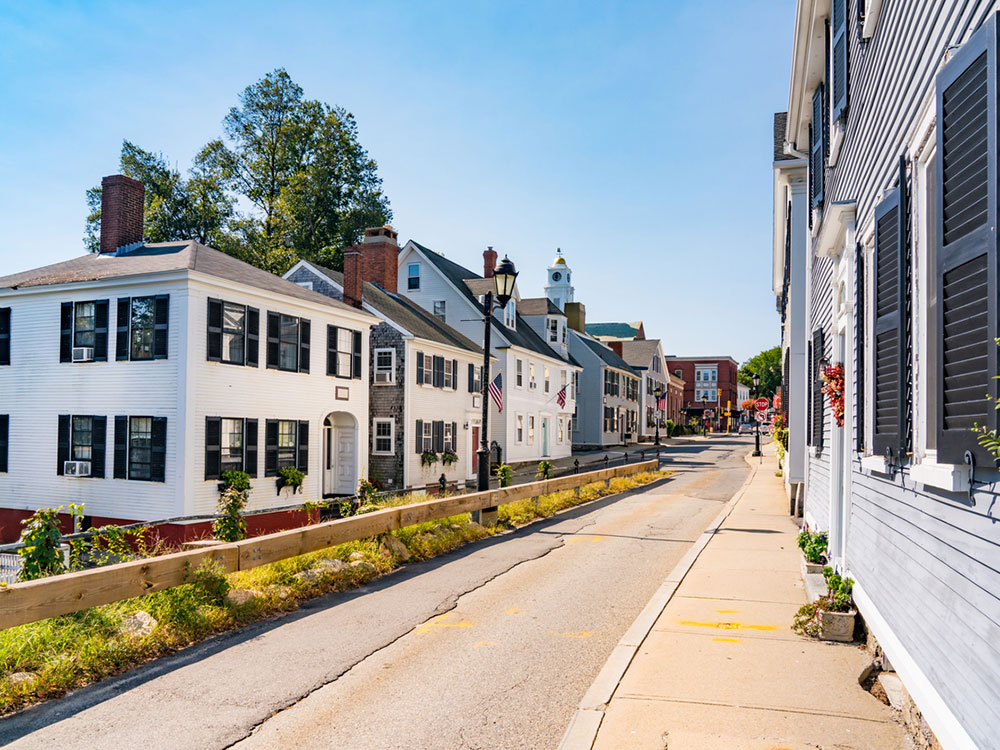
You’re likely familiar with the story of the pilgrims landing at Plymouth Rock from elementary history classes — but the real history isn’t exactly how many of us have heard it. The pilgrims did arrive there and began to explore their new home in 1620, but it had already been named Plymouth since at least 1614 with Captain John Smith’s journey there. And there are no actual accounts of the pilgrims landing on the exact spot where Plymouth Rock sits today (you can go see it at the downtown oceanfront). They had actually likely planned to move on from the spot, but many of the pilgrims were sick and winter was looming. They built their settlement on a former Indigenous cornfield, established their own government under a document called the Mayflower Compact, and operated as an independent province until 1691, when it was absorbed by Massachusetts.
8. Jersey City, New Jersey

As with New York City, the English history of Jersey City, New Jersey — located directly across the Hudson River — dates back to explorer Henry Hudson and the colony of New Netherland, which was established on Lenape Indigenous land in 1623. Michael Reyniersz Pauw, a knight, was given a land grant in what’s now Jersey City, with the stipulation that he bring in at least 50 people — which he didn’t do. In 1633, he had to sell his land back to the Company. Relations with the Lenape began to falter immediately because of the colonists’ treatment of the Indigenous people, and the settlement was almost completely destroyed within 10 years. The British remained in control of the land until the Revolutionary War. In 1779, Alexander Hamilton joined other leaders from New York and New Jersey to lay out and develop the city. Now, the city is home to nearly 262,000 people — and surrounds the most well-known woman of them all, the Statue of Liberty (though her address is officially in New York).
7. Albany, New York

The English history of Albany, New York, starts with a simple trading post and fort built by the Dutch in 1614 on Iroquois land. Explorer Henry Hudson couldn’t move forward any further on the present-day Hudson River, so his Dutch sponsors opened an administrative outpost for the Dutch West India Company at the point he stopped, on Westerlo Island, called Fort Nassau. Due to ice and flood damage, the fort was moved north in 1615 and then replaced by the new Fort Orange in 1623, even further north. The Dutch West India Company established a town called Beverwijck in 1652; it became known as Albany (after the Duke of Albany) when the Dutch surrendered to the British in 1664. Albany stayed under British power until the Revolution, and it was named New York’s capital in 1797.
6. Newport News, Virginia
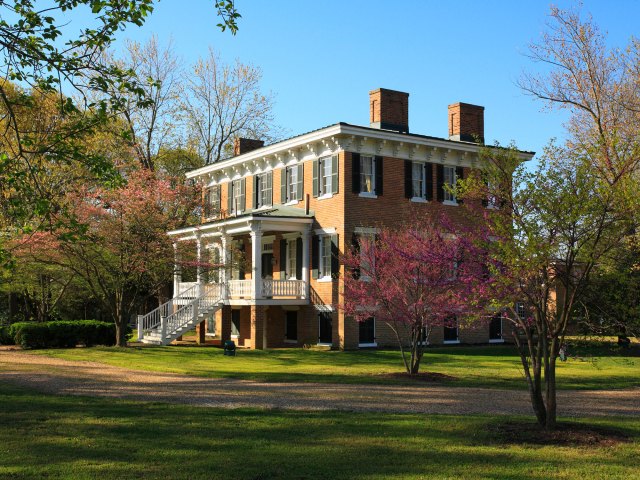
Although it was officially founded in 1896, Newport News, Virginia, had been a city long before then. It first showed up in print as “Newportes Newes” — with eight alternate spellings — in the Virginia Company’s 1619 records. Newport News is named after Captain Christopher Newport, who led settlers to Jamestown in 1607. When the colonists left Jamestown in 1610 after a period of intense starvation, they reunited with Captain Newport on the James River. He told them supplies and reinforcements had arrived, so they returned to Jamestown to await them. From then on, the point at which they met Captain Newport — at the junction of the James River and the Chesapeake Bay — was referred to as Newport’s News. It was eventually shortened to just Newport News. The city now has about 180,000 residents and fans out nearly 70 square miles from that initial meeting point.
5. Kecoughtan, Virginia
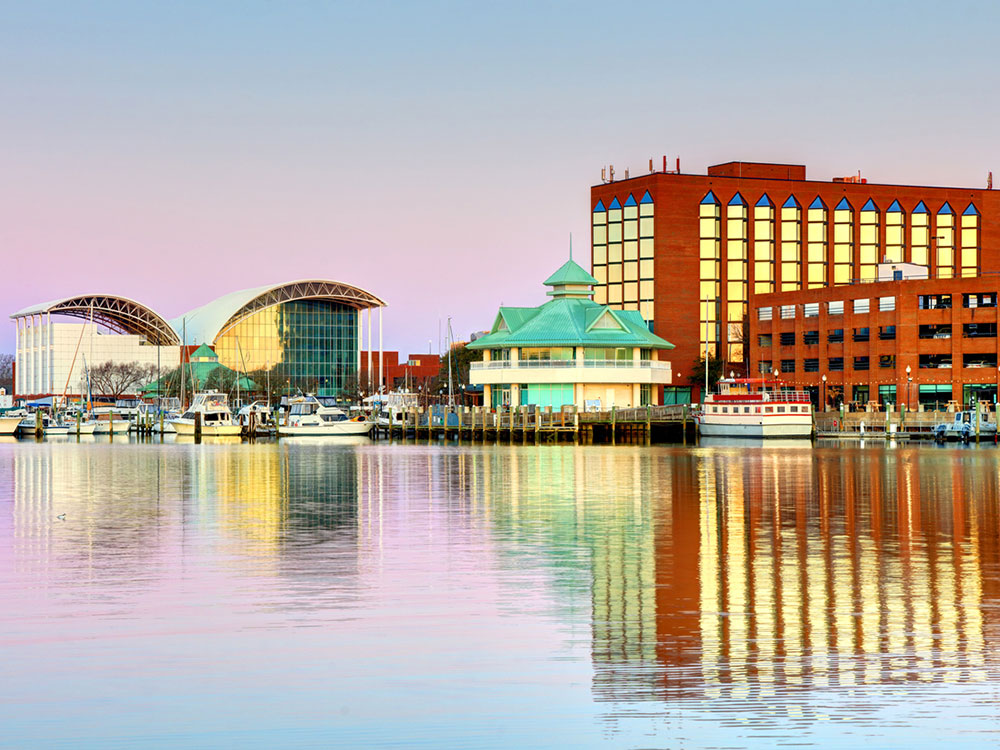
Kecoughtan, Virginia, was settled in 1610 by the same English colonists who founded Jamestown. It was originally home to the Kikotan Algonquin tribe and was the place where English settlers first made contact with Virginia’s Indigenous population. While initial meetings were relatively peaceful, the English settlers soon drove away or tragically killed the Indigenous population. By 1690, Kecoughtan was absorbed by the larger city of Hampton, Virginia, and remains a part of its municipality today.
4. Hampton, Virginia

Also founded in 1610, Hampton, Virginia, is the oldest continuously inhabited English-speaking settlement in the country. It is significant because of its military history. After the United States became an independent country, Hampton became a major military outpost due to its strategic location and abundant natural resources. Hampton had easy access to both the Chesapeake Bay and the James River, making it a great port for shipping weapons and other supplies. This also made it an ideal defensive location. During the Civil War, Virginia itself was the capital of the Confederate States; however, Hampton maintained status as a part of the Union during the entire conflict. Along with Newport News, Norfolk, and Virginia Beach, Hampton is part of the Hampton Roads metropolitan area, home to over 1.8 million people, and celebrates its status as the birthplace of colonial America.
3. Santa Fe, New Mexico

Santa Fe — the oldest state capital still in existence — was officially founded in 1607, but it has actually been in existence since around 1050, when it was home to the Pueblo Native Americans. The Spanish arrived in 1607, and the Pueblo peoples gathered together and attempted to overthrow them toward the end of the 1600s. Their attempts were unsuccessful, and the Spanish took control of the city. Santa Fe remained a Spanish city until 1821, when Mexico declared its independence. Santa Fe was briefly a part of the Texas Republic in 1836, and was eventually conquered from Mexico during the Mexican-American War in 1848, after which it officially became a part of the United States. Santa Fe residents seemingly embrace all aspects of their long and contentious history, and tourists can learn more about it by visiting their fascinating history museums and art galleries.
2. Jamestown, Virginia
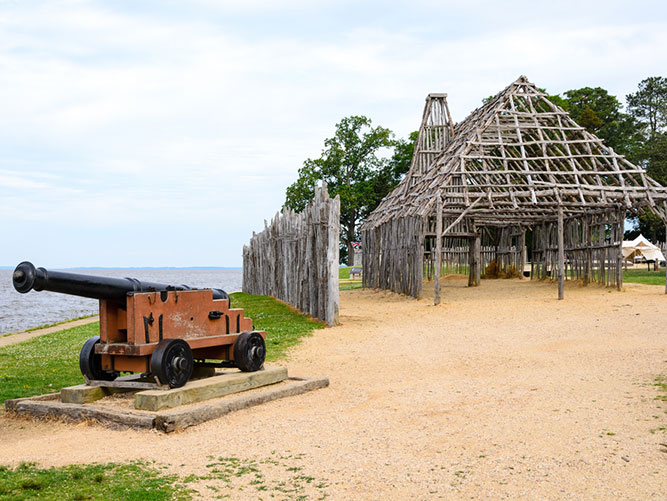
The second-oldest European-established city in the U.S. is Jamestown, Virginia, founded on April 26, 1607. The first permanent English colony in North America had many ups, downs, and false starts before it became the city it is today. It was originally called “James Fort,” named after James Ⅰ of England, but the settlement was abandoned just three years later after the colonists faced starving conditions and conflict with the Indigenous population. Fourteen years later, however, in 1624, Virginia became an official British colony, and more order was brought to the city, which had slowly been re-inhabited. Its name was changed to Jamestown, and the city became the capital of the British colonies. By the mid-19th century, the city was declining, and concerned citizens began campaigns to preserve this original U.S. city in the early 1900s. These efforts were successful, and the city celebrated its 400th year of existence in 2007. Today, you can visit the Jamestown Settlement and see what life was like back in the city’s first years.
1. St. Augustine, Florida
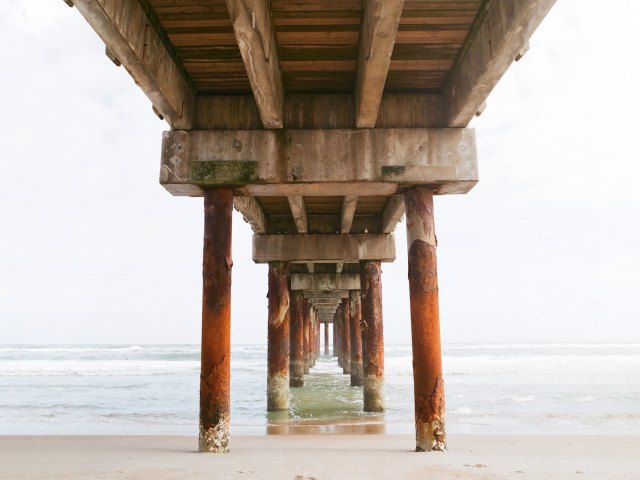
St. Augustine, Florida, was founded on September 8, 1565 — more than 200 years before the United States was an official country. Pedro Menéndez de Avilés was an explorer from Spain who came ashore in Florida on August 28, 1565, on the Catholic feast day of St. Augustine. St. Augustine soon became the capital of Spanish-controlled Florida, and remained so until 1824, when the country had been officially united and the capital of Florida became Tallahassee. Today, visitors to the city can discover more about the history of America’s oldest city in the Castillo de San Marcos history museum.
More from our network
Daily Passport is part of Optimism, which publishes content that uplifts, informs, and inspires.























